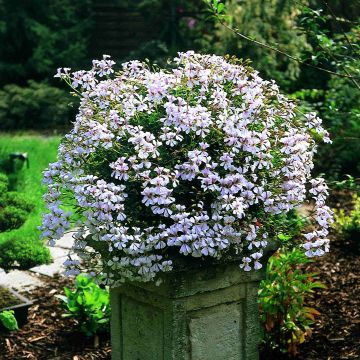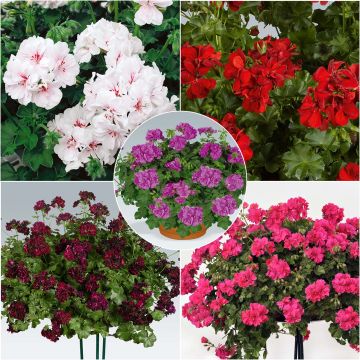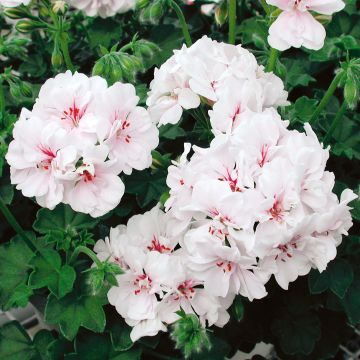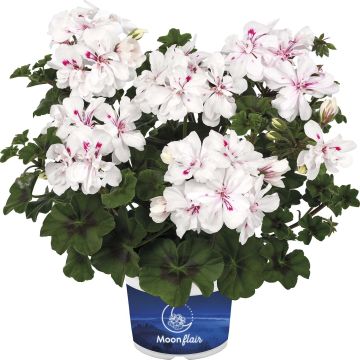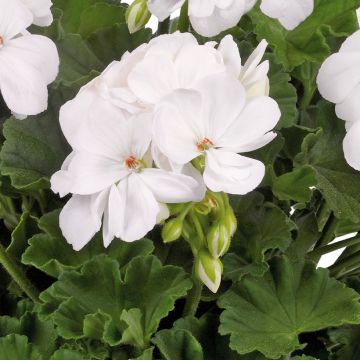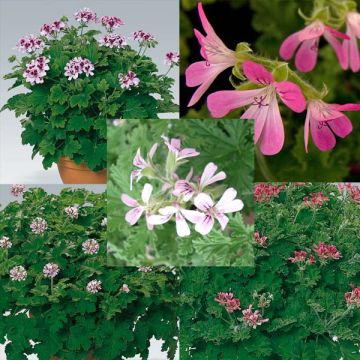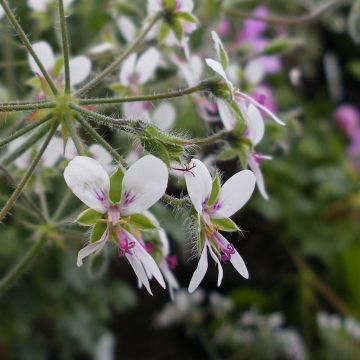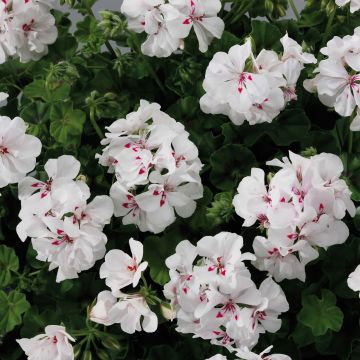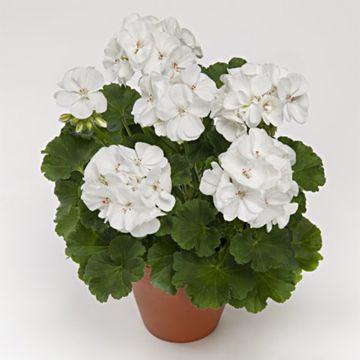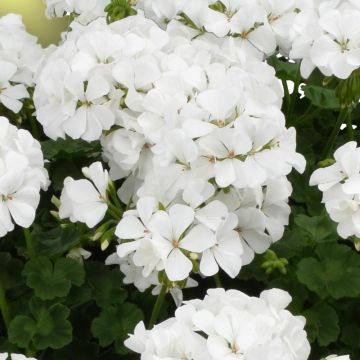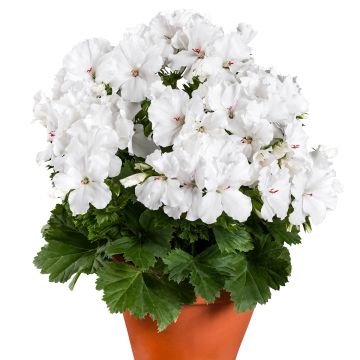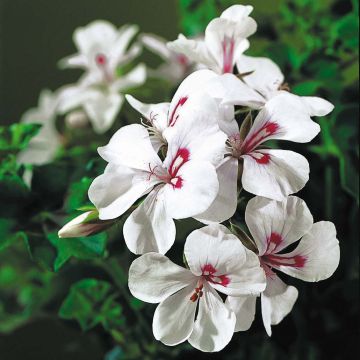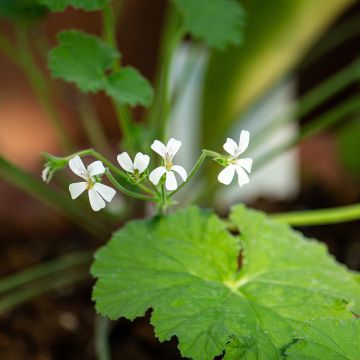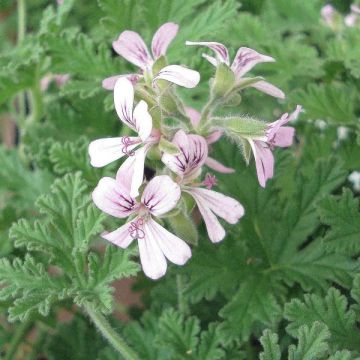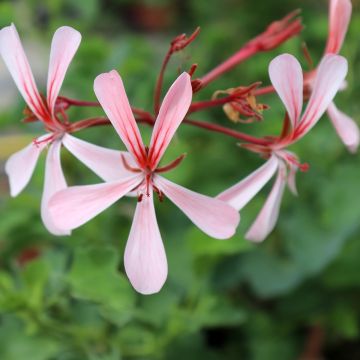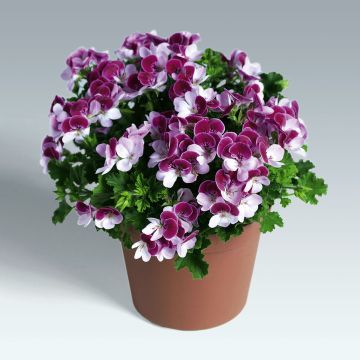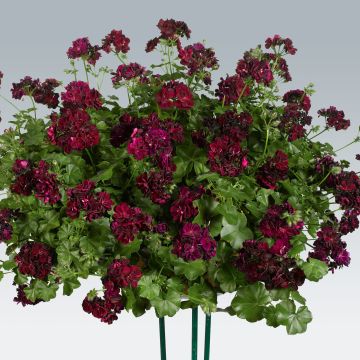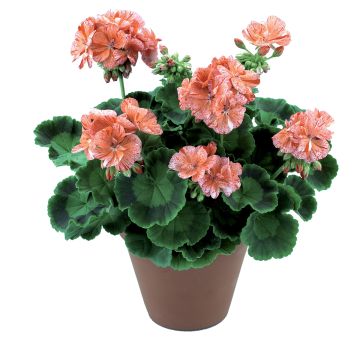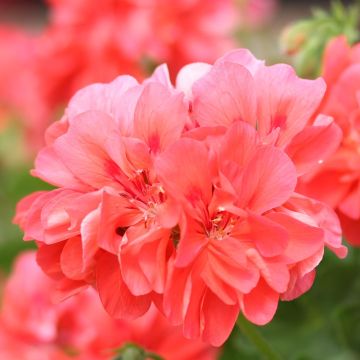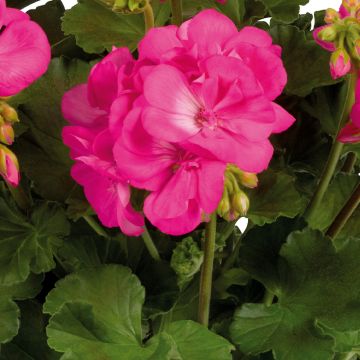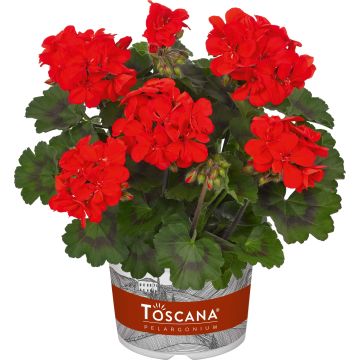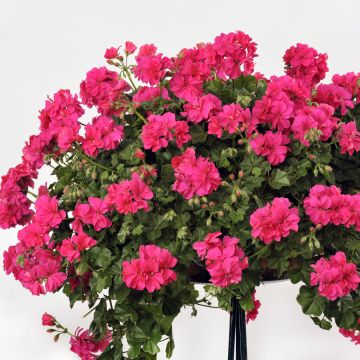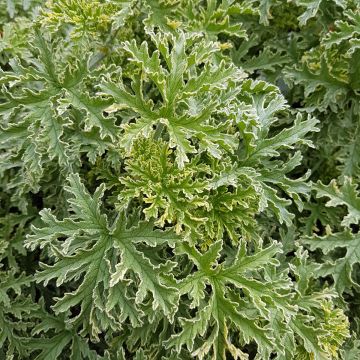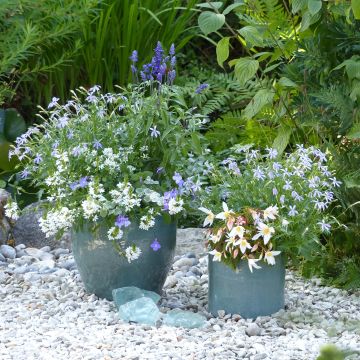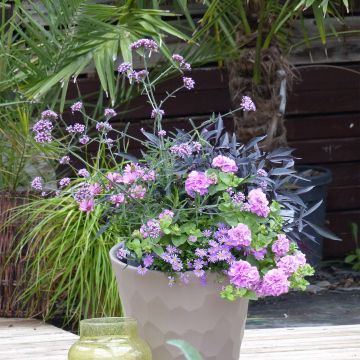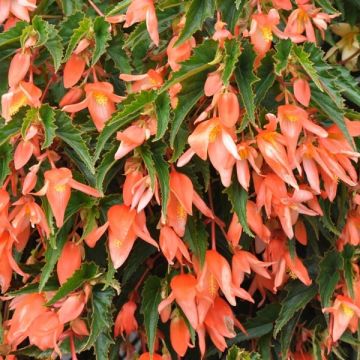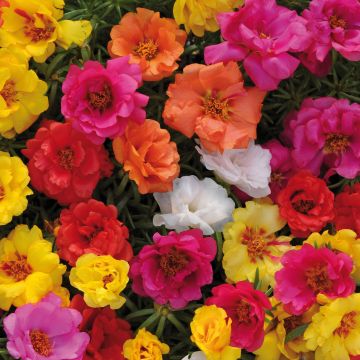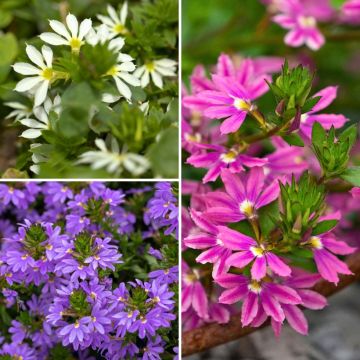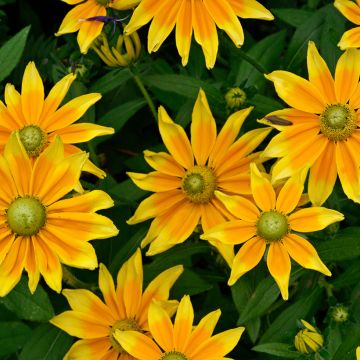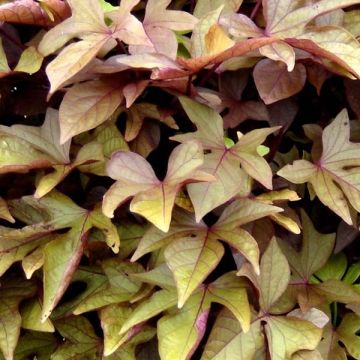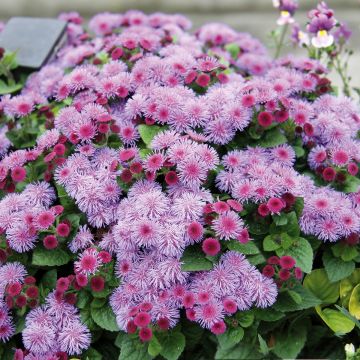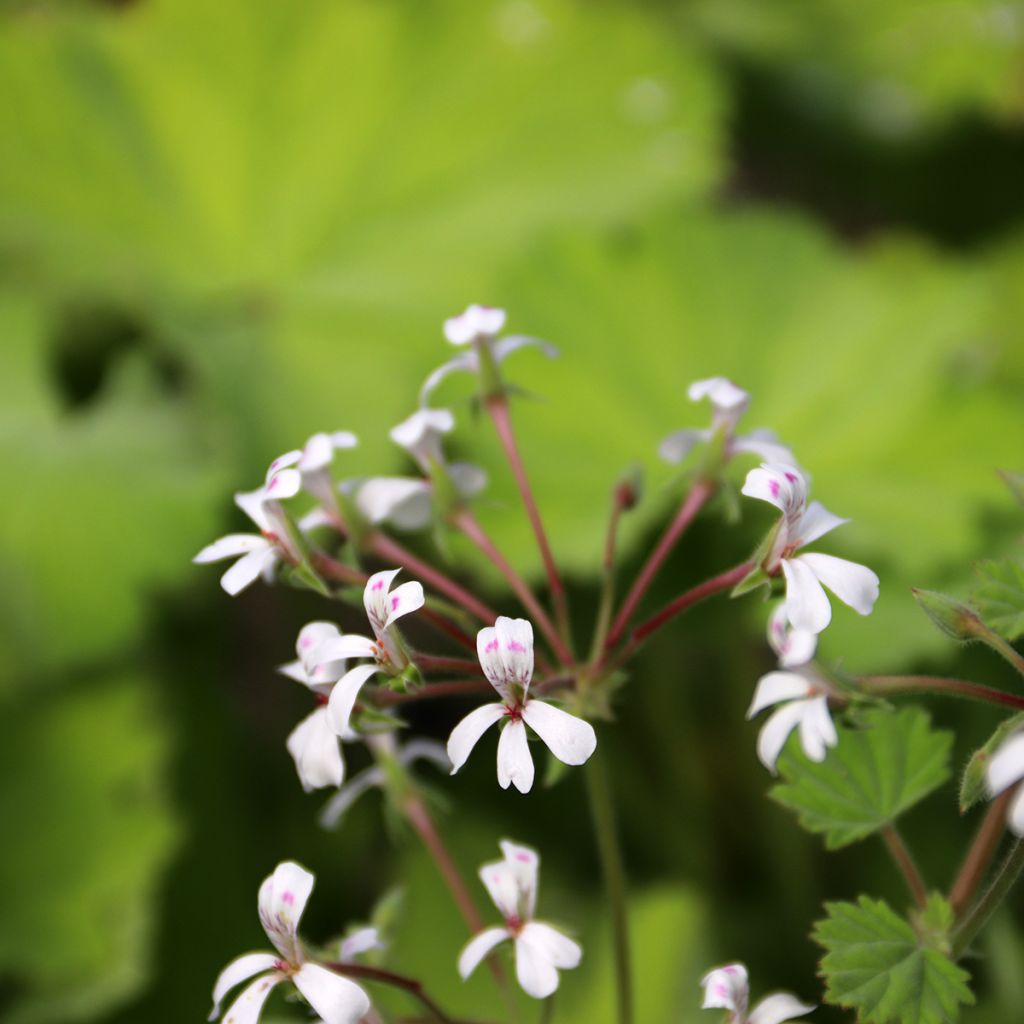

Pelargonium album
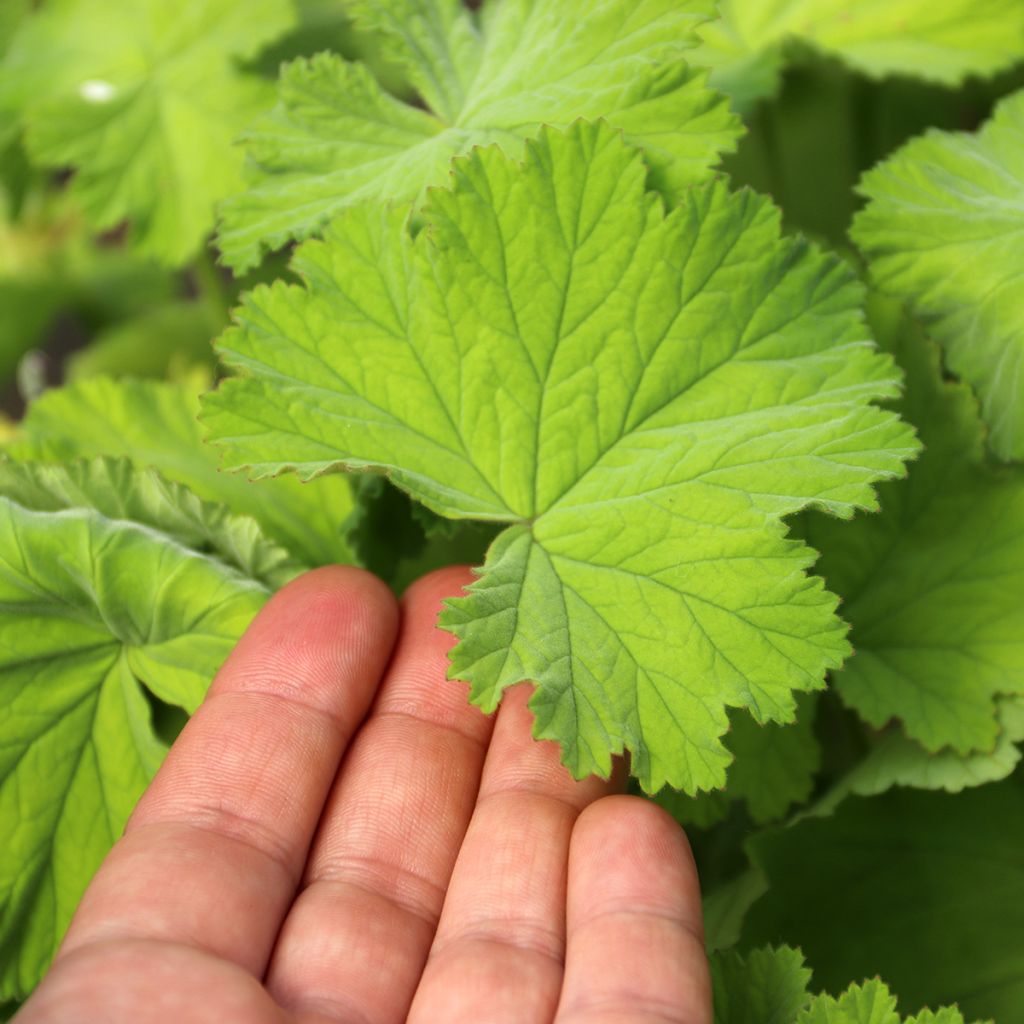

Pelargonium album
Pelargonium album
Pelargonium album
White Geranium, scented-leaf pelargonium
Why not try an alternative variety in stock?
View all →This plant carries a 6 months recovery warranty
More information
We guarantee the quality of our plants for a full growing cycle, and will replace at our expense any plant that fails to recover under normal climatic and planting conditions.
From €5.90 for pickup delivery and €6.90 for home delivery
Express home delivery from €8.90.
Does this plant fit my garden?
Set up your Plantfit profile →
Description
Pelargonium album is particularly loved for its fragrant foliage. Its wide and toothed, evergreen leaves release a menthol scent with a touch of apple and camphor. Plant it in a pot near a high-traffic area to enjoy its fragrance as often as possible. From May to September, it is covered with small white flowers that add to its appeal. This pelargonium is Frost-sensitive (-3 °C), likes sun or partial shade and well-drained soil, and requires protection over winter.
From the geraniaceae family, Pelargonium album is a species native to South Africa, specifically in the Pilgrim's Rest region. It forms a bush with a flat and wide bush reaching 15 to 30 cm high and 40 to 60 cm wide. Its leaves are wide, slightly lobed, and have toothed edges. They persist throughout winter. Their colour is a greyish green and they are slightly hairy. With the slightest touch or crumpling, they release a delightful menthol scent with notes of apple and camphor. Flowering occurs from May-June to October. Its flowers are small (less than 1 cm) and grouped in umbels at the end of the stems. They consist of 2 small, white upper petals with a violet spot, and 3 slightly larger lower petals. This species tolerates short freezes of around -3 °C.
This aromatic foliage plant is ideal if you decide to create a fragrant flower bed or even a whole garden dedicated to fragrant plants. It is also perfect in a pot on a terrace or in a container garden. You can associate it with other fragrant geraniums like Pelargonium 'Prince of Orange' with an orange fragrance or 'Prince Rupert' with lemony scents. Add a fragrant rose from the David Austin range like 'Gentle Hermione' with pink flowers and a 'Belgica Select' honeysuckle for a garden with many scents. The flowers of fragrant geraniums are edible and can be used in fruit salads, desserts, and potpourri.
Report an error about the product description
Pelargonium album in pictures


Flowering
Foliage
Plant habit
Botanical data
Pelargonium
album
Geraniaceae
White Geranium, scented-leaf pelargonium
South Africa
Other Pelargonium - Geranium
Planting and care
Plant your Pelargonium album in the ground after the last frost, in a sunny location. It can also be planted in a pot. Store it away from the cold and only bring it out from May onwards. Scented-leaf geraniums like well-drained soils. In a pot, remember to water it regularly during the summer. It is not hardy and does not survive the winter in the garden unless in a mild climate or by the seaside, in a sheltered location and with protection. However, it is possible to keep it from one year to the next by storing it in a conservatory or a cold greenhouse during winter.
Planting period
Intended location
Care
This item has not been reviewed yet - be the first to leave a review about it.
Plug plants - Annuals
Haven't found what you were looking for?
Hardiness is the lowest winter temperature a plant can endure without suffering serious damage or even dying. However, hardiness is affected by location (a sheltered area, such as a patio), protection (winter cover) and soil type (hardiness is improved by well-drained soil).

Photo Sharing Terms & Conditions
In order to encourage gardeners to interact and share their experiences, Promesse de fleurs offers various media enabling content to be uploaded onto its Site - in particular via the ‘Photo sharing’ module.
The User agrees to refrain from:
- Posting any content that is illegal, prejudicial, insulting, racist, inciteful to hatred, revisionist, contrary to public decency, that infringes on privacy or on the privacy rights of third parties, in particular the publicity rights of persons and goods, intellectual property rights, or the right to privacy.
- Submitting content on behalf of a third party;
- Impersonate the identity of a third party and/or publish any personal information about a third party;
In general, the User undertakes to refrain from any unethical behaviour.
All Content (in particular text, comments, files, images, photos, videos, creative works, etc.), which may be subject to property or intellectual property rights, image or other private rights, shall remain the property of the User, subject to the limited rights granted by the terms of the licence granted by Promesse de fleurs as stated below. Users are at liberty to publish or not to publish such Content on the Site, notably via the ‘Photo Sharing’ facility, and accept that this Content shall be made public and freely accessible, notably on the Internet.
Users further acknowledge, undertake to have ,and guarantee that they hold all necessary rights and permissions to publish such material on the Site, in particular with regard to the legislation in force pertaining to any privacy, property, intellectual property, image, or contractual rights, or rights of any other nature. By publishing such Content on the Site, Users acknowledge accepting full liability as publishers of the Content within the meaning of the law, and grant Promesse de fleurs, free of charge, an inclusive, worldwide licence for the said Content for the entire duration of its publication, including all reproduction, representation, up/downloading, displaying, performing, transmission, and storage rights.
Users also grant permission for their name to be linked to the Content and accept that this link may not always be made available.
By engaging in posting material, Users consent to their Content becoming automatically accessible on the Internet, in particular on other sites and/or blogs and/or web pages of the Promesse de fleurs site, including in particular social pages and the Promesse de fleurs catalogue.
Users may secure the removal of entrusted content free of charge by issuing a simple request via our contact form.
The flowering period indicated on our website applies to countries and regions located in USDA zone 8 (France, the United Kingdom, Ireland, the Netherlands, etc.)
It will vary according to where you live:
- In zones 9 to 10 (Italy, Spain, Greece, etc.), flowering will occur about 2 to 4 weeks earlier.
- In zones 6 to 7 (Germany, Poland, Slovenia, and lower mountainous regions), flowering will be delayed by 2 to 3 weeks.
- In zone 5 (Central Europe, Scandinavia), blooming will be delayed by 3 to 5 weeks.
In temperate climates, pruning of spring-flowering shrubs (forsythia, spireas, etc.) should be done just after flowering.
Pruning of summer-flowering shrubs (Indian Lilac, Perovskia, etc.) can be done in winter or spring.
In cold regions as well as with frost-sensitive plants, avoid pruning too early when severe frosts may still occur.
The planting period indicated on our website applies to countries and regions located in USDA zone 8 (France, United Kingdom, Ireland, Netherlands).
It will vary according to where you live:
- In Mediterranean zones (Marseille, Madrid, Milan, etc.), autumn and winter are the best planting periods.
- In continental zones (Strasbourg, Munich, Vienna, etc.), delay planting by 2 to 3 weeks in spring and bring it forward by 2 to 4 weeks in autumn.
- In mountainous regions (the Alps, Pyrenees, Carpathians, etc.), it is best to plant in late spring (May-June) or late summer (August-September).
The harvesting period indicated on our website applies to countries and regions in USDA zone 8 (France, England, Ireland, the Netherlands).
In colder areas (Scandinavia, Poland, Austria...) fruit and vegetable harvests are likely to be delayed by 3-4 weeks.
In warmer areas (Italy, Spain, Greece, etc.), harvesting will probably take place earlier, depending on weather conditions.
The sowing periods indicated on our website apply to countries and regions within USDA Zone 8 (France, UK, Ireland, Netherlands).
In colder areas (Scandinavia, Poland, Austria...), delay any outdoor sowing by 3-4 weeks, or sow under glass.
In warmer climes (Italy, Spain, Greece, etc.), bring outdoor sowing forward by a few weeks.

































